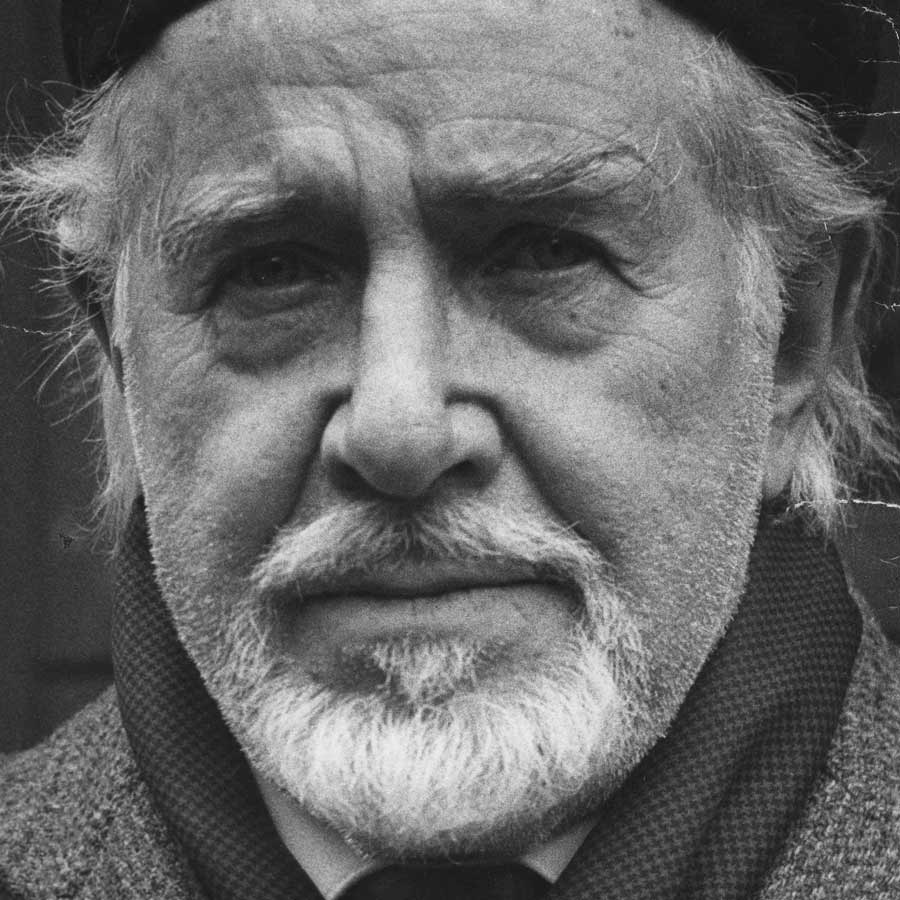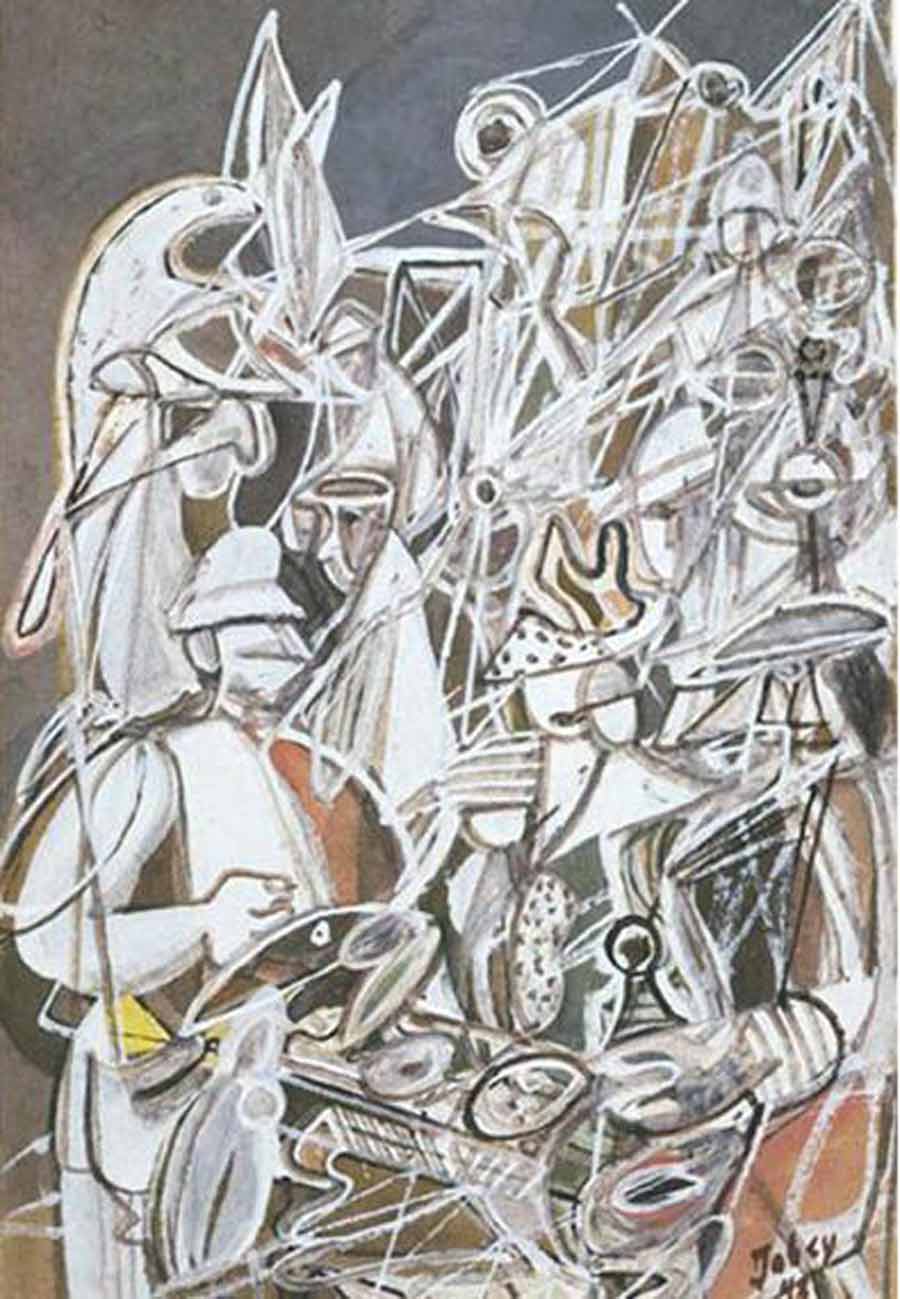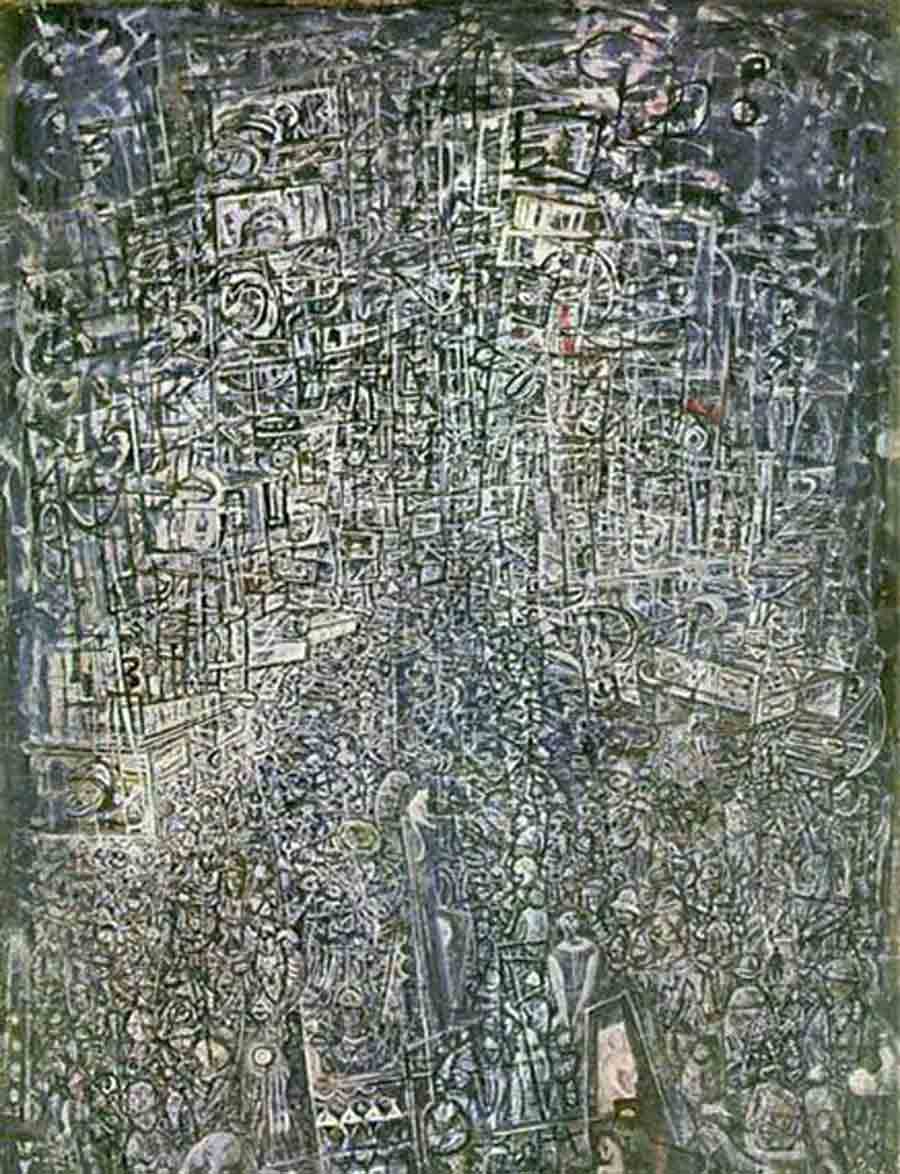The views expressed in our content reflect individual perspectives and do not represent the authoritative views of the Baha'i Faith.
The gentle soul and the inspired brush of Mark Tobey—one of the founders of the American Mystical school of painting—had an enormous influence on contemporary art.

Mark Tobey
Today you can see Tobey’s luminous abstract paintings in many major galleries and permanent collections across the world, including the Guggenheim collections, the Museum of Modern Art in New York City, the Metropolitan Museum of Art, the Smithsonian American Art Museum in Washington, D.C., the Tate Gallery in London and the Whitney Museum of American Art.
Most known for his signature “white-writing” style and “all-over” approach to painting, some believe that Mark Tobey was one of the most influential yet under-recognized artists of the American and European abstract contemporary art movement of the mid-20th century.
Spanning over five decades, Tobey’s work revealed a radical approach to beauty, composition, and a constant exploration of how to convey the spiritual and emotional on canvas. Inspired by the divine teachings of Baha’u’llah, some say that his spiritual affiliations prevented him from being recognized in the mainstream—but his dedication to the Baha’i Faith never wavered. His works influenced some of the most famous abstract-expressionists in history, and his paintings were exhibited in some of the most famous and prestigious galleries in the world—but unless you’re a budding artist yourself, you may never have heard of him.
Welcome to Uplifting the World of Being, a new series of articles where we’ll learn about Baha’is who left their mark on history through their creative and artistic pursuits:
Arts, crafts and sciences uplift the world of being, and are conducive to its exaltation. Knowledge is as wings to man’s life, and a ladder for his ascent. – Baha’u’llah, Epistle to the Son of the Wolf, p. 26.

Fish Market (1943) by Mark Tobey
The American artist Mark Tobey was born in Centerville, Wisconsin, on December 11, 1890, the youngest son of a Congregationalist family. His mother Emma Cleveland Tobey supported the family at home, while his father George Tobey worked as a carpenter and builder. In 1893, the Tobey family left the Midwest and settled in Chicago, Illinois. As an adolescent Tobey took classes at the Art Institute of Chicago from 1906-1908, but much like his abstract expressionist colleagues, he opted for a more self-taught, hands-on approach. He began his career working as a portrait artist, landing a job as fashion illustrator for the monthly American women’s magazine McCall’s in Chicago and then New York.
Following his first one-man show of portraits and sketches in 1917 at Manhattan’s Knoedler & Co. art gallery, Tobey posed for the renowned Baha’i portrait artist Juliet Thompson, who introduced him to the Baha’i teachings. During the portrait session, Tobey read some of the Baha’i books that Juliet had available in her studio. In 1918, he accepted an invitation to attend Green Acre, a nearby Baha’i school, where he declared his faith in Baha’u’llah. His acceptance of the Baha’i Faith became the main catalyst behind his work, and prompted a lifelong exploration of the representation of spirituality in art and the mystical state of mind:
I have been influenced by the Baha’i religion which believes there has been but one religion which renews itself under different names. The root of all religions, from the Baha’i point of view, is based on the theory that man will gradually come to understand the unity of the world and the oneness of mankind. It teaches that all the prophets are one—that science and religion are the two great powers which must be balanced if man is to become mature. I feel my work has been influenced by these beliefs. I’ve tried to decentralize and interpenetrate so that all parts of a painting are of related value. Perhaps I‘ve hoped even to penetrate perspective and bring the far near. – Mark Tobey, letter to National Spiritual Assembly of the Baha’is of the United States, Arthur Dahl, Jr., Papers, p. 410.

Electric Night (1944) by Mark Tobey
Tobey moved to Seattle, Washington in 1921 and began teaching at the Cornish School of Allied Arts, where he founded their art department. It was here that Tobey met Teng Kuei, a Chinese painter and student, who introduced him to Chinese calligraphy and penmanship. Although Teng was 10 years Tobey’s junior, and a student at the University of Washington, Tobey began to study under him. Teng taught Tobey about the representation of linear movement through lines, moving away from the solid mass objects prominent in painting during that time. This played a pivotal role in connecting Tobey to Eastern painting practices, which would later lead to his “all-over” signature style, covering the entire canvas with paint.
In 1925, Tobey made his first trip to Paris and then the Middle East, including stops in Istanbul, Cairo, Beirut and Haifa, where he visited the Baha’i Shrines, met Shoghi Effendi, the Guardian of the Baha’i Faith, and became increasingly fascinated with Persian and Arabic script. Upon returning to his home in Seattle in 1928, Tobey co-founded the Free and Creative Art School. That same year he also spent time in Victoria, Canada, with one of the country’s leading modernist, post-impressionist artists, Emily Carr. Together they explored the art of the Northwest region’s First Indigenous Peoples, experimenting with abstraction, cubism and Tobey’s developing signature styles, which also had an impact on Carr’s work.

















Comments
Sign in or create an account
Continue with Facebookor